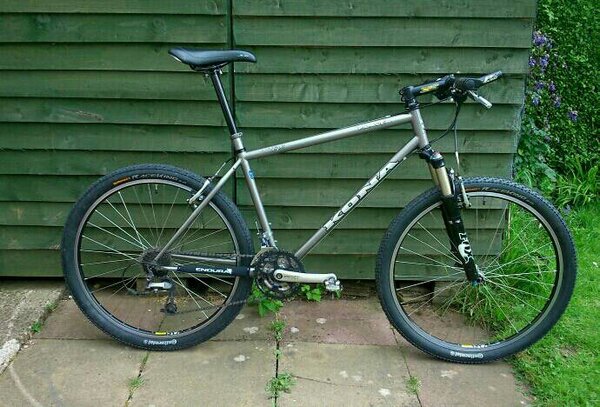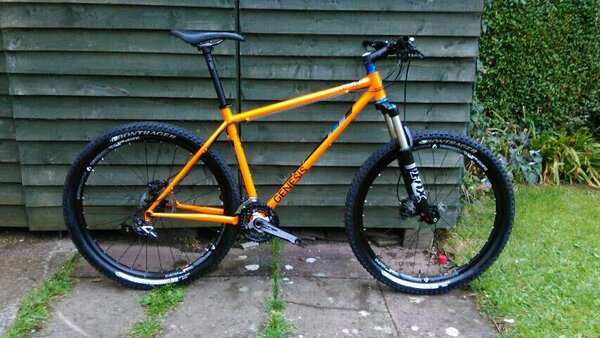Re:
I'll weigh in...
I spent most of last year putting my Genesis Latitude together, as and when funds allowed. It has big 120mm forks, 27.5 tubeless tyres that I can run at lower pressures for increased grip and comfort, powerful brakes and an upright riding position. It's also, as has been mentioned before, a weighty beast, around 29lbs.
My '95 Kilauea on the other hand has a long and low riding position, lightweight wheels and tyres that spin up easily and sharp and precise handling. It weighs around 26lbs.
The loop around my local woods is exactly 5 miles long. I've been round it plenty of times on the Kona, and if I really push it, can do a lap in just over 20 mins. I typically do 3-4 laps, and record it all using the Strava app on my phone. First time out on the Genesis was a few weeks ago, just finding my feet with it so to speak. Definitely felt slower up the hills, the extra weight making itself apparent. Obviously faster down the hills, and probably quicker through the nasty rocky section that has the Kilauea bouncing around a fair bit. On balance though, I'd have said my 20 odd year old Kona was the faster of the two.
Therefore, I was rather surprised to find out that when I went all out for one lap on the Genesis, the Strava verified time was only a handful of seconds slower than my quickest time on the Kilauea. Effectively, over 5 miles of varied terrain, no difference. I guess retro feels faster, but two decades of mtb development means that modern just works more efficiently.
Regards
Marge

